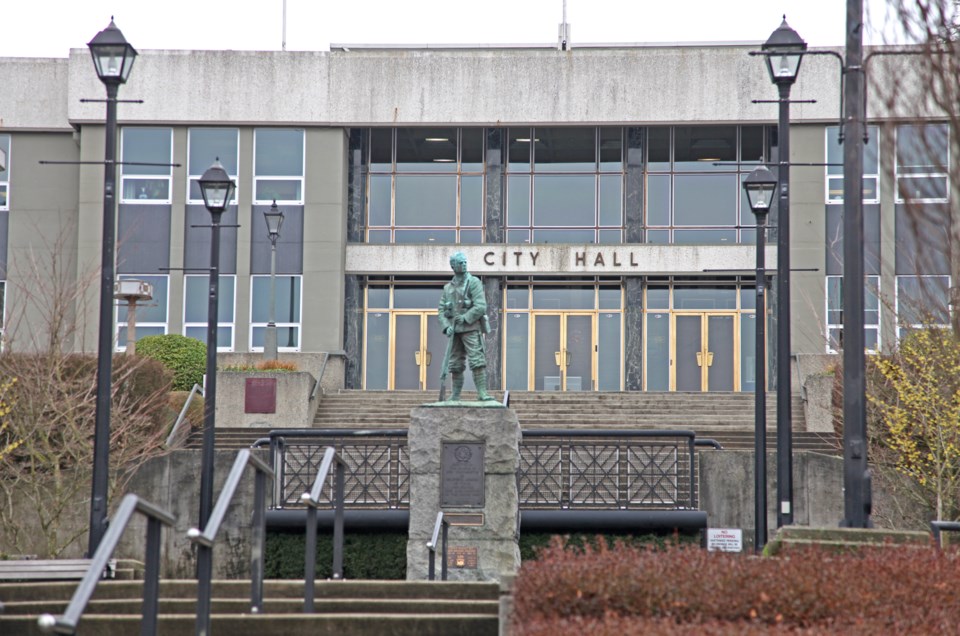New Westminster would be on track to meet its greenhouse gas reduction targets – if it wasn’t for those darn vehicles.
In 2008, the city adopted a corporate energy and greenhouse gas emissions reduction plan that sought to reduce greenhouse emissions by 15 per cent by 2017. A staff report states that the city’s total greenhouse gas emissions had decreased by 7.7 per cent between 2007 and 2016.
The city tracks energy consumption and greenhouse gas emissions in four sectors: buildings; lighting; waste and wastewater; and vehicle fleet. While emissions have declined in most of these areas since 2007, emissions in these sectors rose from 2015 to 2016, due to factors such as increases in heating of buildings because of colder weather, the number of street lights and lighting on sports fields.
The vehicle sector saw an increase of 2.8 per cent (or 47 tonnes) in emissions from 2015 to 2016, which the city attributes to the increased services related to the collection of organics and recycling and for snow and ice removal.
“The city continues to focus on undertaking projects that reduce fuel/electrical consumption in the buildings and fleet sectors,” said a staff report by environmental coordinator Jennifer Lukianchuk. “This subsequently reduces energy costs for the city.”
Initiatives that are underway or being considered for implementation in 2018 include: retrofitting the lighting over the ice-playing surface in Queen’s Park Arena, in the police building and certain locations at the Queensborough Community Centre; converting some police vehicles to a dual gasoline/propane system; purchasing city vehicles with lower fuel consumption rates; piloting new LED street-light technology in three neighbourhoods; and replacing aging pump station equipment with high-efficiency models.
Coun. Chuck Puchmayr said the city is making inroads and having successes in most sectors, but the fleet is what’s impacting the overall reduction of greenhouse gas emissions. He’d like the city to take a more comprehensive look at the use of alternative fuels, such as propane and bio-diesel, for its fleet and expand the use of electric vehicles in the fleet.
Coun. Patrick Johnstone said the city is approaching the end of its 10-year plan and needs to start thinking about goals for the next 10 years. He said the city needs to be aggressive about meeting greenhouse gas targets and set policy that allows the city to meet its targets.
“We need to have a better discussion about our fleet. Our fleet is what is holding us back right now,” he said. “We are doing really well in buildings. We are doing really well in solid waste. We are doing well in a lot of things. It’s really our fleet that we have to take a serious look at.”
Johnstone said compact, built-out, urban cities like New Westminster should actually have lower greenhouse gas emissions than larger, sprawling cities.
Mayor Jonathan Cote said the city was on track to meet its 10-year target, but had “a bit of a setback” last year. He said the city needs to demonstrate its working toward its targets and plan how to get there.
“Looking at the charts, in many respects, in most areas we have already met or exceeded our 10-year target,” he said. “When it comes to buildings, we are already 15 per cent reduction in greenhouse gas emissions. In lighting, we are down 53 per cent, while in water and waste water we are down 50 per cent as well. The one thing that sticks out like a sore thumb is our vehicle fleet. It is actually up 8.2 per cent. I think that clearly illustrates that we have got an area we probably need to focus on moving forward in the coming year, but even longer term.”
Council approved a motion to have staff examine alternative fuels such as propane and bio-diesel for city vehicles and expansion of the use of electric vehicles in the fleet, as well as a broader review of the city’s overall fleet policy.



